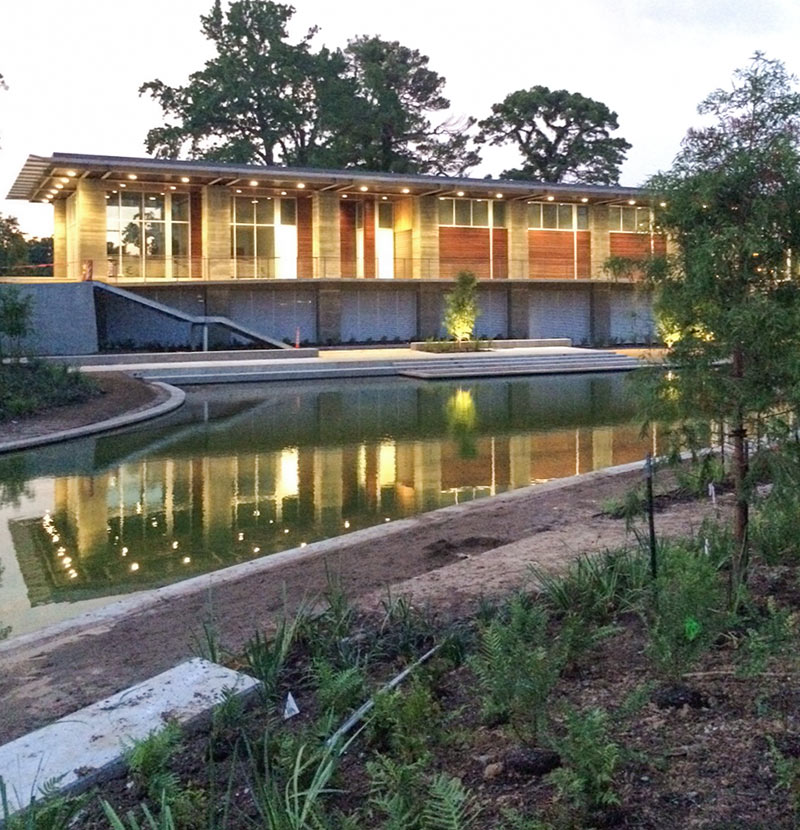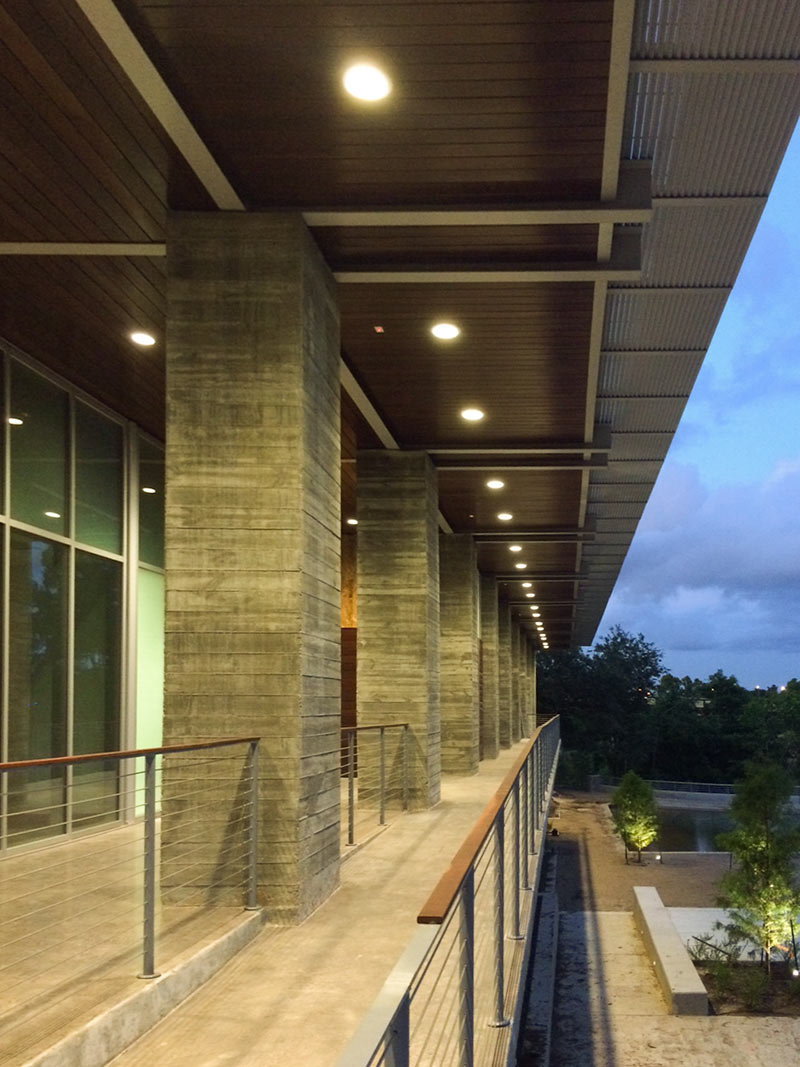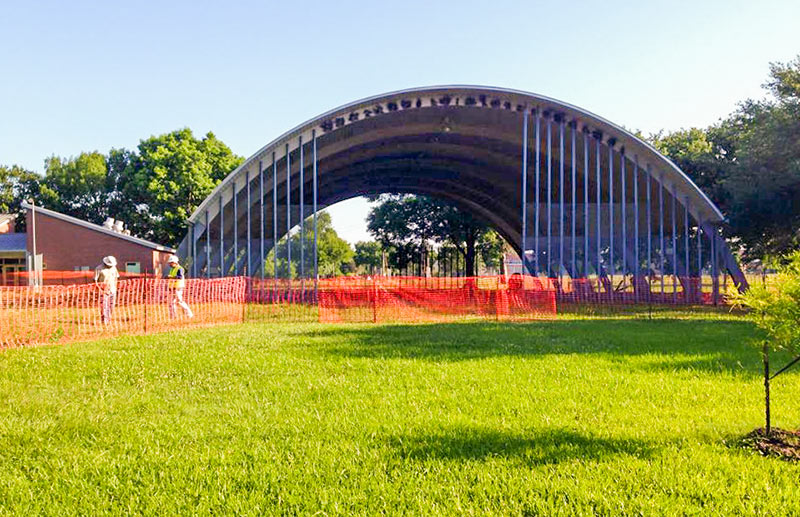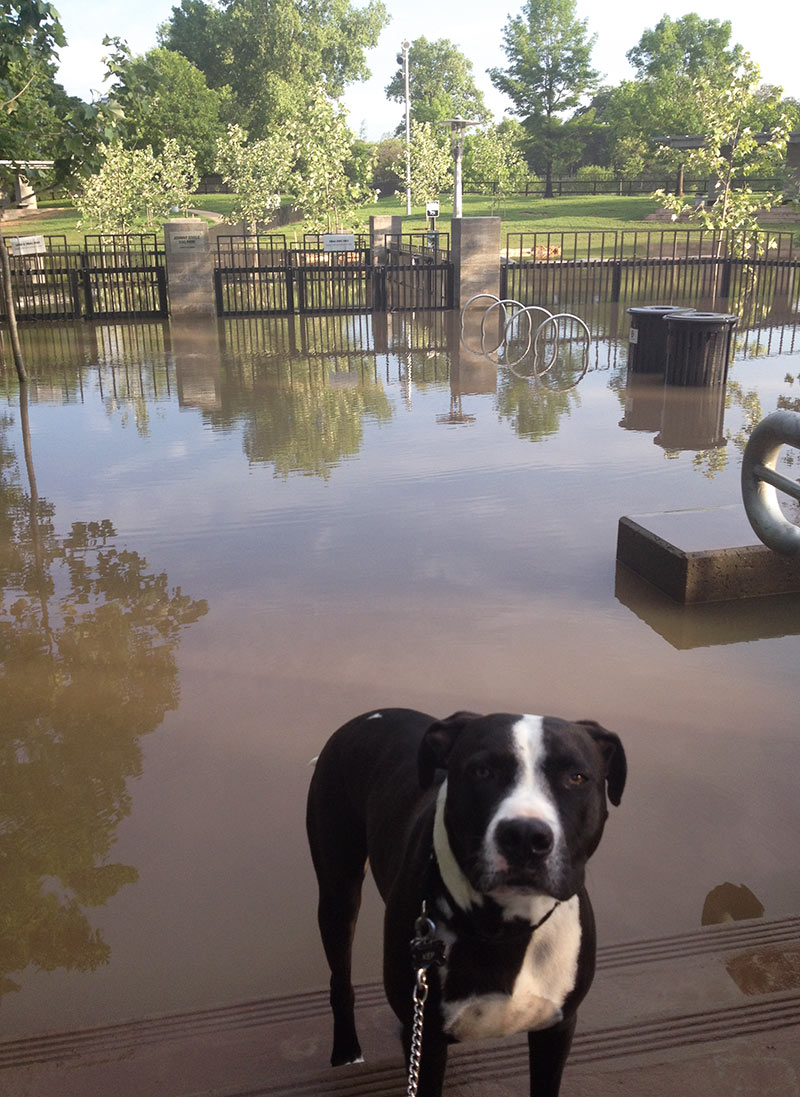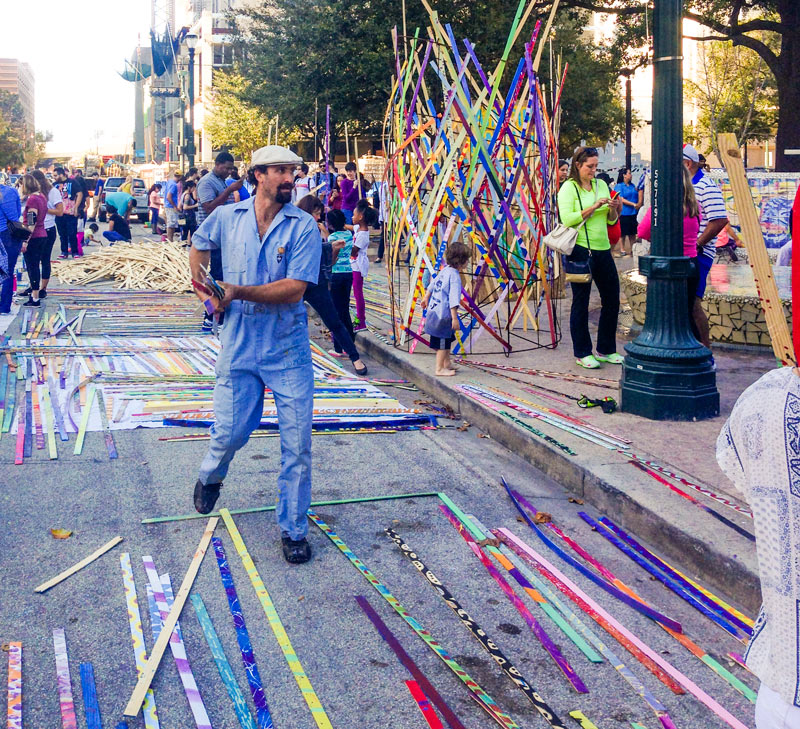
Preston St. was closed down Saturday afternoon between Travis and Milam, as hundreds of people showed up to Market Square to paint the reclaimed strips of wood that will compose Patrick Renner’s upcoming Trumpet Flower installation. The sculpture is designed to loom 60 feet above the space between One City Centre and its parking garage downtown (off Main St. Square and Fannin, between Lamar and McKinney).
Renner, of far-more-horizontal Funnel Tunnel fame, is slated to install the towering cone by the end of March, as part of the Art Blocks project planned to jazz up Main Street Square leading up to the 2017 Superbowl. The tip of the structure will stretch down from the top of the garage and flare out into a furnished canopy shelter at street level. A tiny model of the installation was on display at a side table during the painting free-for-all:


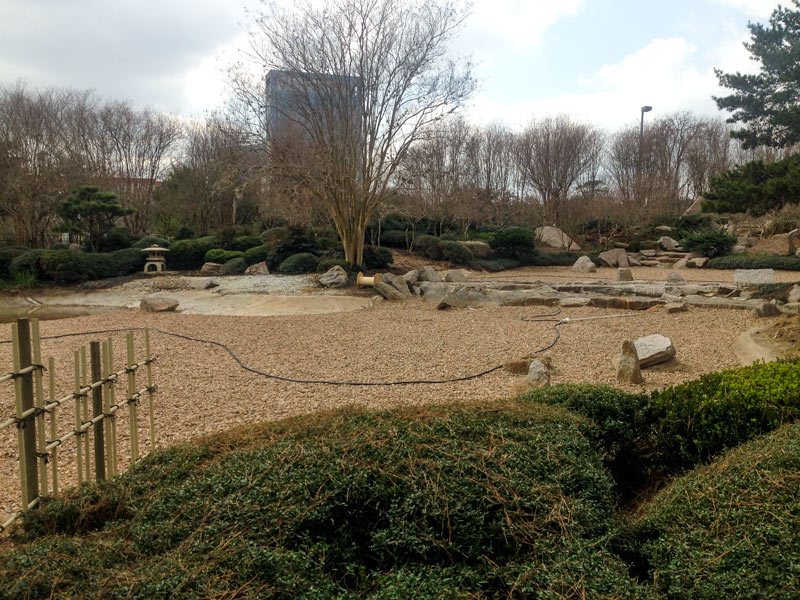
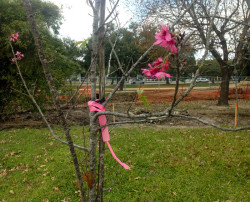
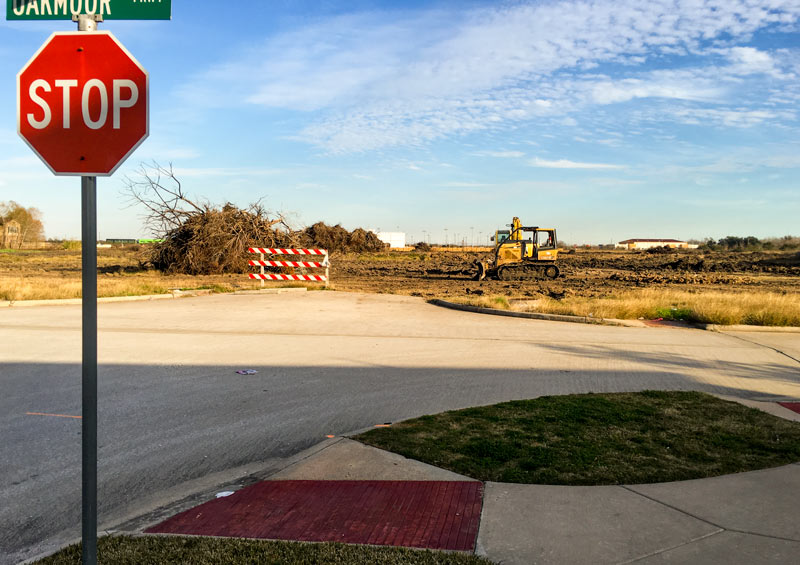
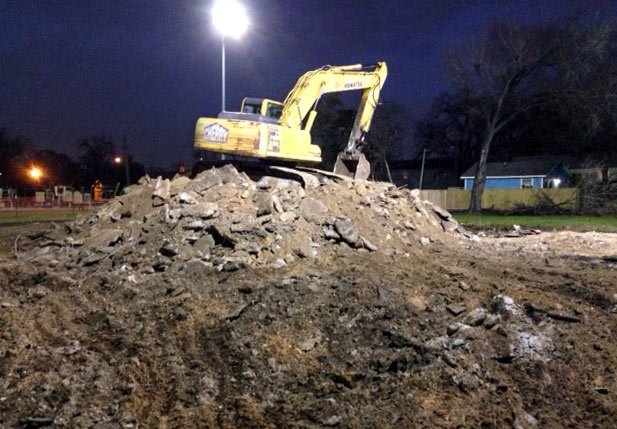
 Money from the Gulf Coast Restoration Trust Fund, set up with part of the $18.7 billion BP paid last summer to settle with the federal government over the Deepwater Horizon oil spill, is making its way to Houston in the form of a $7.1 million grant supporting the Houston Parks Board’s Bayou Greenways 2020 project. Joe Martin of the HBJ reports that the money will be
Money from the Gulf Coast Restoration Trust Fund, set up with part of the $18.7 billion BP paid last summer to settle with the federal government over the Deepwater Horizon oil spill, is making its way to Houston in the form of a $7.1 million grant supporting the Houston Parks Board’s Bayou Greenways 2020 project. Joe Martin of the HBJ reports that the money will be 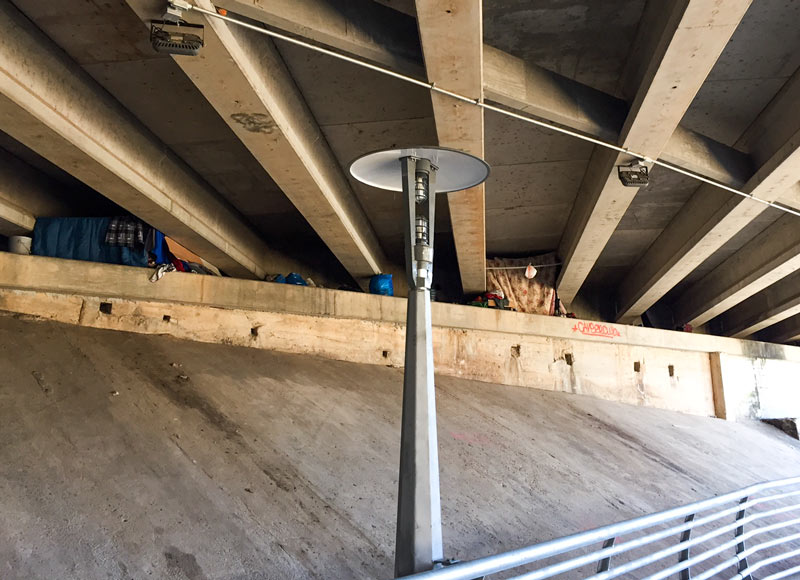
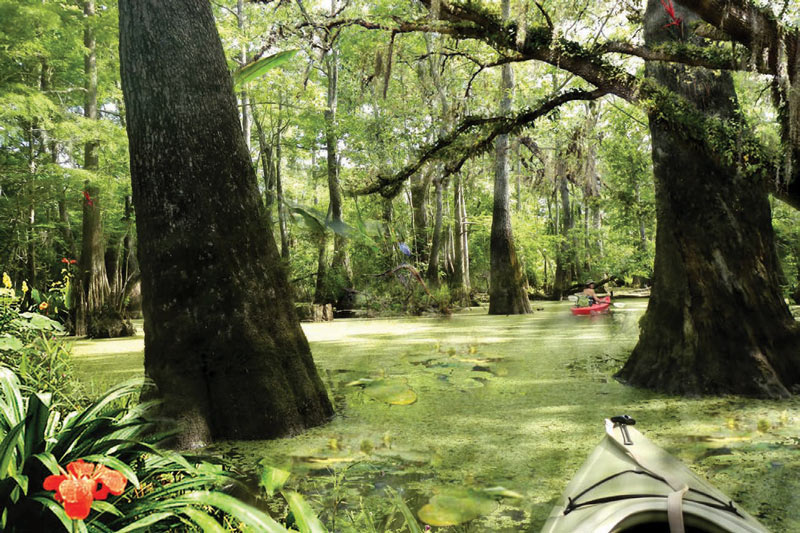
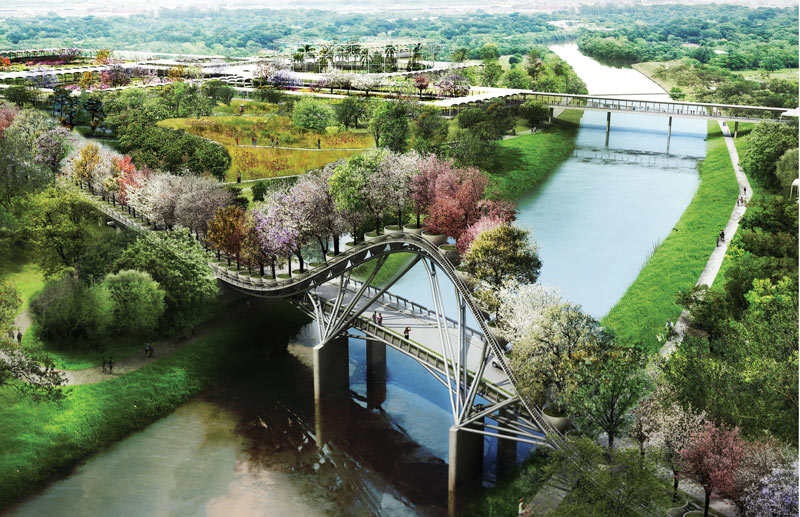
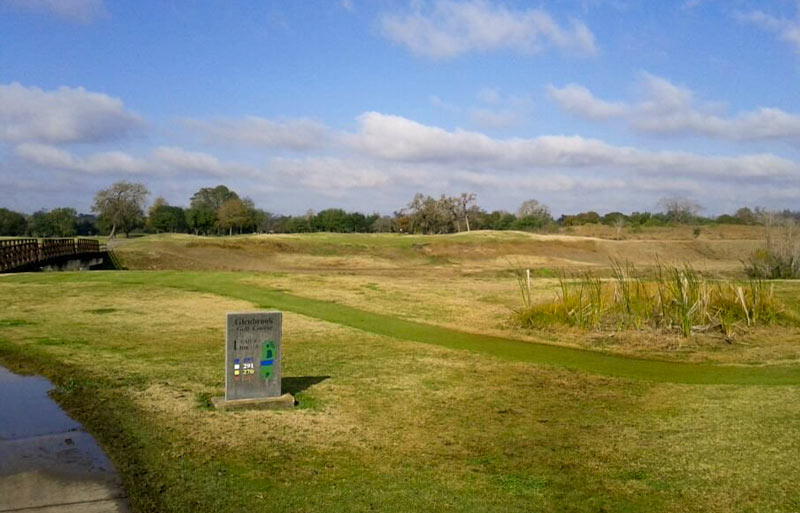
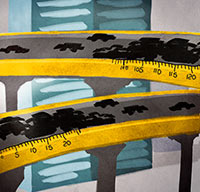 “Unfortunately it will take much more than sprucing up Buffalo Bayou Park to make Houston a more pleasant place. The big problem is that for most people in Houston, the only way to get to a nice place like BBP is the only way you can get anywhere — by car. And that fact alone will take years of political will, planning, and hard work to change. And as long as it doesn’t change, Houston will remain what it is currently: a road system that people sleep and work around.
The primary datum in a place like NY is the human body. Planning with the human body as the primary reference point generally makes for a pleasant place for people. Here in Houston, the primary unit of reference is the automobile, as such Houston primarily accommodates cars, not people. Scale matters. Infrastructure (such as sidewalks, small neighborhood parks, bike lanes, rails, etc) matters.
Buffalo Bayou Park is a nice place because it is designed for people. Houston on the other hand . . .
In terms of civic amenities and property values, ‘you can’t have both’ only in the market as it currently exists. We ought to be able to have a decent city and also live in it, but that can’t happen until we decide to decide that enough’s enough and begin actually planning our city.
There are people and institutions in Houston working hard to that end, but so far they are too much ‘a voice in the [civic] wilderness.’ I’m optimistic though. I see people noticing what makes a nice city, where our shortcomings are, and working toward implementing necessary changes.” [
“Unfortunately it will take much more than sprucing up Buffalo Bayou Park to make Houston a more pleasant place. The big problem is that for most people in Houston, the only way to get to a nice place like BBP is the only way you can get anywhere — by car. And that fact alone will take years of political will, planning, and hard work to change. And as long as it doesn’t change, Houston will remain what it is currently: a road system that people sleep and work around.
The primary datum in a place like NY is the human body. Planning with the human body as the primary reference point generally makes for a pleasant place for people. Here in Houston, the primary unit of reference is the automobile, as such Houston primarily accommodates cars, not people. Scale matters. Infrastructure (such as sidewalks, small neighborhood parks, bike lanes, rails, etc) matters.
Buffalo Bayou Park is a nice place because it is designed for people. Houston on the other hand . . .
In terms of civic amenities and property values, ‘you can’t have both’ only in the market as it currently exists. We ought to be able to have a decent city and also live in it, but that can’t happen until we decide to decide that enough’s enough and begin actually planning our city.
There are people and institutions in Houston working hard to that end, but so far they are too much ‘a voice in the [civic] wilderness.’ I’m optimistic though. I see people noticing what makes a nice city, where our shortcomings are, and working toward implementing necessary changes.” [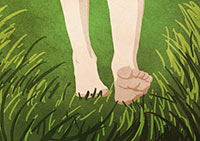 “When I see the improvements come on line at Buffalo Bayou, I keep thinking to myself ‘what’s the catch? Are these on loan from another city? Will Culberson make us take them down so he can build a new highway?’ But it is really happening. Buffalo Bayou is really turning into Houston’s Central Park (NY’s version does have a private restaurant right in the middle of it–Tavern on the Green). The nature playground on the east end is getting finishing touches as well as the performance space and snack bar over the old waterworks. The only problem I have encountered is the mud that slides down the banks and accumulates on the trails after a heavy rain. But it is much better than it used to be. Who knows. Maybe this is for real. And maybe people will actually start moving to Houston because it is a nice place to live.” [
“When I see the improvements come on line at Buffalo Bayou, I keep thinking to myself ‘what’s the catch? Are these on loan from another city? Will Culberson make us take them down so he can build a new highway?’ But it is really happening. Buffalo Bayou is really turning into Houston’s Central Park (NY’s version does have a private restaurant right in the middle of it–Tavern on the Green). The nature playground on the east end is getting finishing touches as well as the performance space and snack bar over the old waterworks. The only problem I have encountered is the mud that slides down the banks and accumulates on the trails after a heavy rain. But it is much better than it used to be. Who knows. Maybe this is for real. And maybe people will actually start moving to Houston because it is a nice place to live.” [